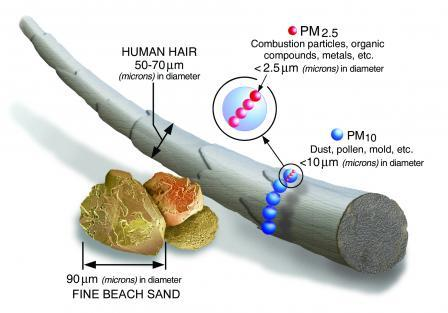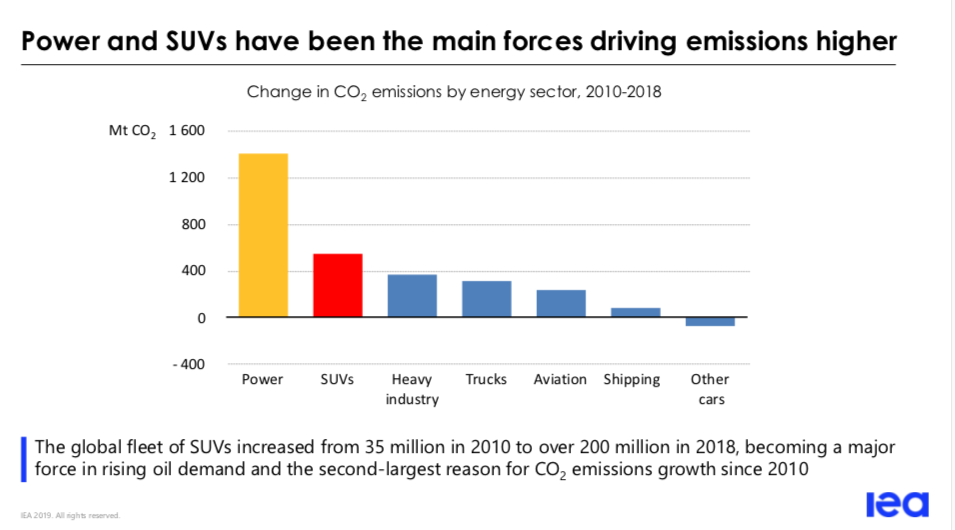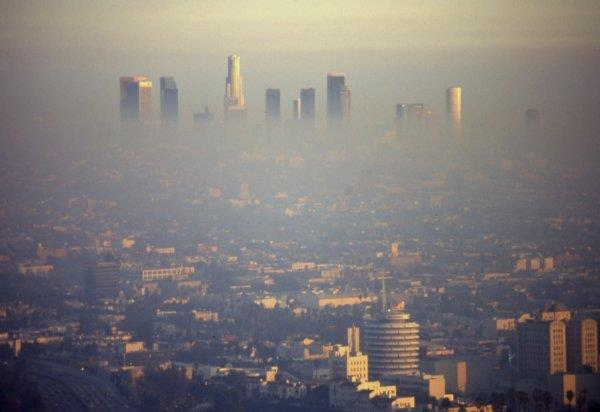Small Particles from Combustion of Fossil Fuels Impact Human Health
Most of us have probably heard the phrase, “Don’t sweat the small stuff.” A Merriam-Webster definition of that phrase states, not “to worry about small things” or, another is “to tell someone not to worry about things that are not important.”
If only that were true.
Here’s the problem. Or, at least one of them with regards to climate change and human health. Its particles. Real small ones: tiny ones that penetrate deep into our lungs, pass into our blood stream and then circulate all through our bodies. Most of these particles originate with the combustion of fossil fuels [coal and oil] and contribute to thousands of early deaths in the United States in people with cardiac and lung diseases with damage extending to other organs.
The illustration here of a human hair from cleantechnica.com/2019/12/16 on ‘human health’ gives one some perspective on what is meant by these small particles. It shows a human hair that is 50--70 microns in diameter. It then illustrates the size of fine beach sand [90 microns], and dust and pollen particles that are <10 microns in size.
Now as seen in the illustration we get to the real small particles that are about 1/20 the diameter of a human hair or ~2.5 microns, or less, usually written as PM2.5. These are the bad actors. A recent study called these PM2.5 particles “the largest environmental risk factor worldwide.”

Several recent peer reviewed journal articles are highlighting the importance of limiting human exposure to PM2.5. One paper is by Bove et al. 2019, “Ambient Black Carbon Particles Reach the Fetal Side of Human Placenta,”; another in 2019, Rivas et al. “Association between Early Life Exposure to Air Pollution and Working Memory and Attention”.
Over the past decade, scientists have linked pollution to reproductive problems such as infertility and miscarriage. “A new study [2019] concludes that women with higher exposures to car and truck fumes are more likely to experience failure of in vitro fertilization [IVF]”. This is serious stuff!
Unfortunately, in the U.S. particulate matter levels have increased 5.5% in the last two years because of wildfire smoke and lax enforcement of the Clean Air Act. C. Arden Pope III, a public health researcher at Brigham Young University, calls this reversal in air quality “stunning” [C&EN p.40, Dec9/16/2019]. And our Environmental Protection Agency plans on relaxing standards for exposure to these particles. Go figure.
Unfortunately, when one combines local geography, the power we consume, the vehicles we buy and most importantly the people we elect to public office, dirty air with increased greenhouse gas emissions [GHG] is what we get. Note the bar chart with seven vertical boxes titled, “Power and SUV’s have been the main forces driving emissions higher.” The height of the boxes is the amount of Mt [megatons] CO2 [carbon dioxide] emitted, see left side axis. This bar chart is from the IEA [International Energy Agency].
As stated under the chart, SUV’s have increased in number from 35 million in 2010 to over 200 million in 2018. These vehicles, along with pickup trucks, get less miles per gallon and thus increase the amount of fossil fuels we burn. This results in increased emissions of CO2, as well as increased amounts of particulates and other pollutants in the vehicle exhaust.

But with anything as complex as global climate change lots of forces are at work in the other direction as well; i.e. technology reducing the cost of renewables, an emerging awakening of the global business establishment as well as citizens, to the dangers of climate change. Enter Greta Thunberg, Bill McKibben and many, many others who are working to communicate the science behind our changing climate. Greta in late January 2020 even led a protest march in Lausanne and in Davos, Switzerland at the World Economic Forum and delivered a talk there asking executives and world leaders to heed the science and take action now to reduce greenhouse gas emissions.
Again, the IEA in another recently published graph shown here, titled, “New solar PV Projects are taking off” presents data indicating how the global power capacity by source is changing. Coal and nuclear show no growth but Solar PV, Gas, Wind and Hydro are increasing significantly.
Yes, this is a photo of an American city. We are looking at air that is full of particles, large and small. It is not Beijing, New Delhi, India or anywhere else. It is here in the U.S. We have a lot of work to do.

Finally, there is a short piece here titled, “The Ethics of Science” by William Stone. In this era of “Ignorance is Strength,” so-called fake news, and the bashing of newspapers and reporters in general, it clearly articulates that science seeks truth and understanding.
The Ethics of Science
The end that science seeks is truth.
There are rules that must be followed in seeking the truth.
which require trust, independence in observation and in thought.
Freedom, respect and tolerance are handmaidens to science.
Scientists acquire knowledge by small steps, none of which is final
and the mistakes of one generation of scientists are rungs in the ladder toward truth. The only
purpose of seeking the truth is to accumulate knowledge which becomes the property of the world
without respect to race, religion, nationality, political and sexual orientation or cultural beliefs. Science
is unifying because it seeks answers which society ultimately hold as important.
-by William Stone, signatory of the second warning to humanity.
The scientific career of Raymond N. Johnson, Ph.D., spanned 30 years in research and development as an organic/analytical chemist. He is currently founder and director of the Institute of Climate Studies USA (www.ICSUSA.org). Climate Science is published monthly.



